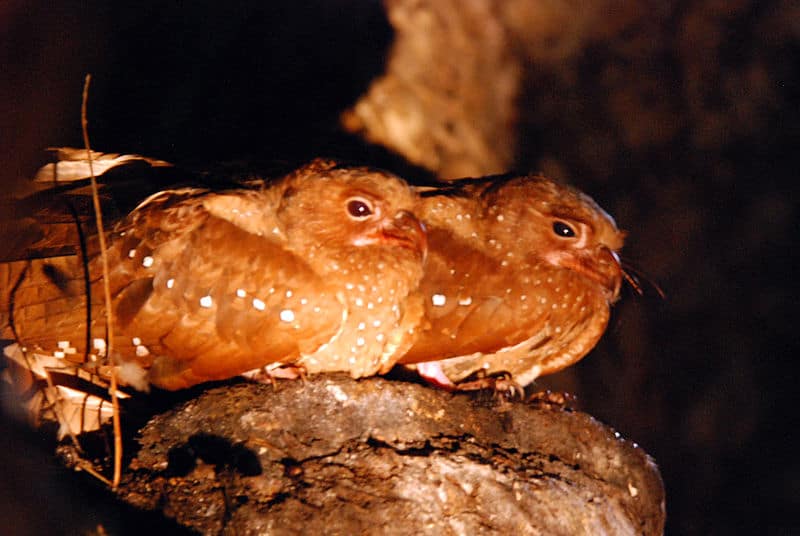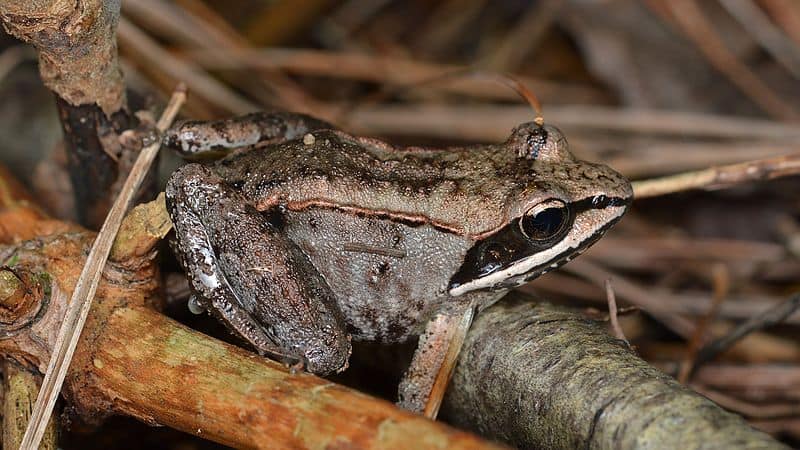Long Eared Owl Facts
- Perhaps most notably, the descriptive term of Long Eared Owl serves as one of the common names for a truly majestic type of raptor. The remarkable animal does, however, also possess several other general names. These are used in different parts of its widespread range.
- These alternate general names include several highly descriptive terms. Some even qualify as highly distinctive. They include such appellations as the cat owl, the lesser horned owl, and the northern long-eared owl. These monikers reflect both its appearance and its habitat range.
- In the scientific community, though, it’s perhaps better known by its technical designation. Thankfully, that’s a significantly simpler one for the layperson to pronounce than many related names. That’s because the stunning avian holds the simple formal tag of Asio otus.
- This gorgeous creature additionally shares a great portion of its native range with another, closely related avian. That’s the visually quite similar species ironically, yet appropriately, known as the short-eared owl. The two animals can most easily be distinguished while at rest.
- That’s because, at that time, the ear tufts of the Long Eared Owl become clearly visible to the observer. This constitutes the most easily recognizable physical difference between the two species. The eyes of the two different creatures additionally display different colors.
- A total of four recognized subspecies of this remarkable avian currently exist around the world. But, this product of Nature and evolution has a decided advantage over many of them. Unlike some of them, this wonderful bird appears to have a sizable and stable population.
- Due to this pleasant situation, the IUCN presently lists the wonder as a Species of Least Concern. This ranking appears on its Red List. It nonetheless must be considered to be facing at least a few threats to its existence. These perils include habitat loss and climate change.
Related Articles



Long Eared Owl Physical Description
The mesmerizing Long Eared Owl instantly captivate those individuals fortunate enough to encounter one of these marvels. Yet, the animal usually does so due more to its striking appearance than impressive dimensions. That’s true since it only ranks as a medium-to-large variety of owl.
In that regard, though, the captivating bird follows a well-established pattern typical of its kind. That’s the fact that it displays a certain degree of the physiological characteristic of sexual dimorphism. In its case, this evolutionary trait manifests itself in terms of pure physical size.
Overall, members of the species attain a respectable body size. Mature specimens average approximately 16 in (40 cm) in total length. Wingspan, meanwhile, reaches a mean measurement of roughly 39 in (1 m). Adult weight varies significantly, but generally averages around 15.3 oz (435 g).
As a general principle, females of this astonishing species typically achieve greater measurements in all of these categories than their male counterparts. Exceptional specimens do occasionally occur, however. When these do appear, it’s regardless of gender, and they rarely exceed the norm by much.
The body of each sex also develops as slimmer and more elongated than most owls. Long, prominent tufts develop on the side of the head. The bird has a distinctive orange to buff-colored face with a dark outline. It also has large round eyes, that typically show a yellow to orange in color.
The plumage of the amazingly evolved Long Eared Owl usually receives the most attention from those who see it, however. In both sexes, the bird shows a mottled brown, gray, and buff with streaks and speckles. However, the underside’s streaked with dark brown on a pale background.
Here too, though, the biological wonder presents gender-based differences. The overall patterns remain the same, but vary in the intensity of the colors. Females tend to be darker and more heavily marked than males. Their stomach also often has a more pronounced reddish-brown or buff tone.
- Kingdom: Animalia
- Phylum: Chordata
- Class: Aves
- Order: Strigiformes
- Family: Strigidae
- Genus: Asio
- Species: A. otus
Long Eared Owl Distribution, Habitat, and Ecology
Much like many related species, the breathtaking Long Eared Owl evolved as partially migratory in nature. However, to the surprise of many people, this beautiful avian inhabits a relatively broad swathe of the earth’s surface. That’s due to the fact that it appears on several different continents.
More precisely, however, the marvel appears on a total of three separate one’s. These broader locations consist of the continents of Asia, Europe, and North America. Like many birds, the fascinating animal commonly moves southward within its native range during the winter months.
Nature provided this visually distinctive creature with an extremely strong natural advantage over many competing birds. That’s the fact that the avian developed as a highly adaptable species with a decided preference for an impressively wide variety of both woodland and semi-open habitats.
It does display its greatest preference, though, for a select few types of ecosystems. These favorites include regions comprising dense woodlands, coniferous forests, and mixed forests, allowing for roosting and nesting. Yet it’s also often found near grasslands, meadows, farmland, or wetlands.
It prefers to roost in thickets, dense trees, and even sometimes shrubs. The animal frequently does so in evergreen trees, such as pines and spruces. It doesn’t build its own nest, but reuses old nests of other birds, like crows, magpies, or hawks. It also sometimes roosts in the cavities of trees.
The Long-eared Owl plays a crucial role in its ecosystem as a nocturnal predator that helps regulate small mammal populations. This prey especially includes voles, mice, shrews, and young rabbits. It also occasionally eats small birds, bats, reptiles, and large insects when other prey’s unavailable.
Breeding season generally occurs between March to July, depending on the exact location. Following mating, the females lay 3 – 10 eggs, with 4 – 6 being the most common. These appear white, oval, and about 1.6 in (4 cm) in size. Incubation generally requires between 26 – 28 days.
Species Sharing Its Range



Check out our other articles on 5 Fabulous Deer Varieties, Barreleye Fish, Fingal’s Cave, Black Sea Hare, Snow Leopard, Naked Man Orchid, Green Sea Turtle, Fire Salamander, Green Iguana












I believe that the first pic is a Great Horned Owl, not a Long Eared. Very different face.
Hello Brett!
First, just let me say how gratifying it is to know that the followers of OBP are paying such close attention! Second, allow me to apologize for the error itself. I am not a professional in any sense of the term….merely a highly enthusiastic amateur. Therefore, I am wholly dependent upon the accuracy of the various scholarly sources our summaries are typically derived from. I make EVERY effort to ensure the accuracy of our articles, because the readers of OBP deserve NO less.
That being said, even the experts can, it would seem, accidentally utilize an incorrect image. The scholarly source that I drew that particular image from erroneously identified the image as a Long Eared Owl. I assure you that I will redouble my efforts to ensure the accuracy of our articles! Once again: thank you!
Sincerely,
Todd Sain Sr.